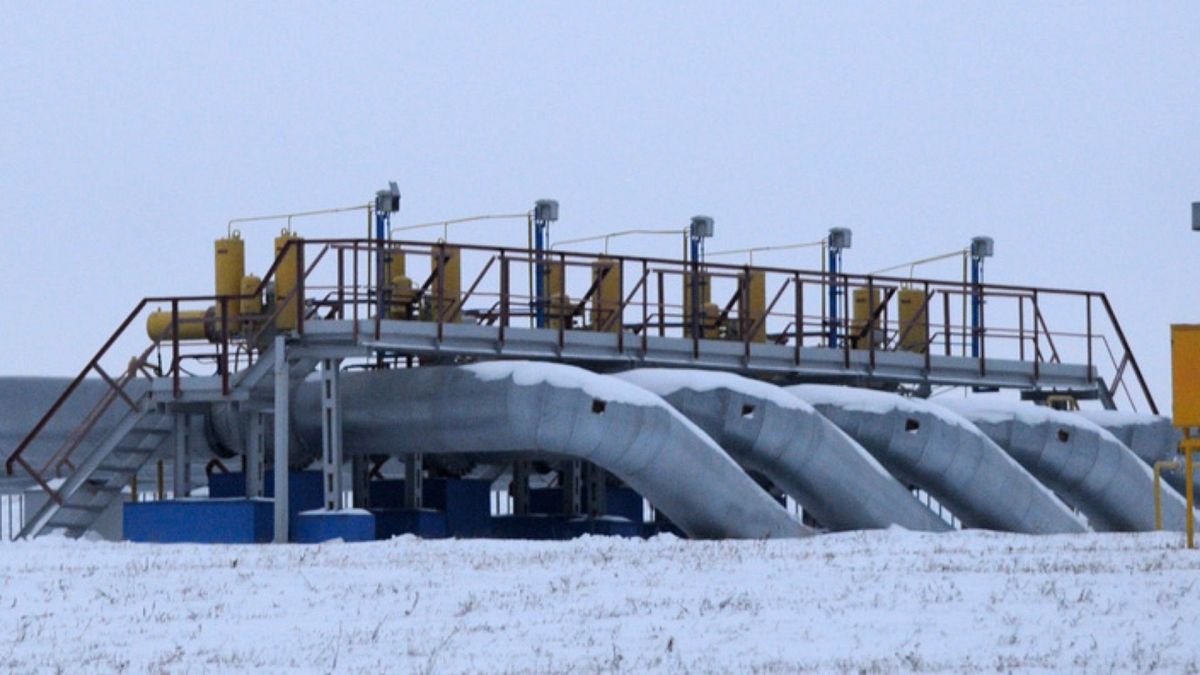The entire continent is still heavily dependent on Russian gas, even though Moscow’s large-scale invasion of Ukraine is already in its third year.
Although Russia has been waging war in Ukraine for two and a half years, despite a barrage of sanctions and repeated assurances from the EU and individual European countries to fully support Kyiv against Moscow’s invasion, Russian gas continues to flow to the continent.
Even though Ukraine continues its incursion into Russia’s Kursk region, where there is a gas measuring station in the town of Sudzha, the situation is not letting up and many are wondering why.
The city is important because it is where natural gas from Western Siberia flows through Ukraine and then via Austria, Hungary and Slovakia into the EU, where it generates electricity and heats homes.
Actual control over the station in Sudzha is difficult to verify due to military secrecy and lack of access for observers or journalists. Either way, the gas continues to flow to Europe because Ukraine never blocked it in its own pipeline systems throughout the entire war.
According to the Ukrainian gas transmission system operator, 42.4 million cubic meters of gas were expected to flow through the Sudzha station on Tuesday. This is roughly the average for the last 30 days.
Before the war, Kiev and Moscow had agreed to a five-year contract under which Russia committed to supplying fixed quantities of gas to Europe through the Ukrainian pipeline system, which was built when both countries were still part of the Soviet Union.
The majority state-owned Russian energy company Gazprom makes money from the gas and Ukraine charges transit fees.
This agreement expires at the end of the year and Ukrainian Energy Minister German Galushchenko has stated that the country has no intention of extending it.
Russia turns off the tap
Russia supplied around 40% of Europe’s natural gas before launching its full-scale invasion in February 2022, sending gas to Bulgaria via pipelines under the Baltic Sea (Nord Stream), Belarus and Poland, Ukraine and via the Turk Stream under the Black Sea through Turkey.
When the war broke out, the Kremlin stopped most deliveries via the pipelines between the Baltic states and Belarus and Poland, citing disputes over the requirement to pay in rubles.
Nord Stream was blown up in an act of sabotage, but the exact details of the attack remain unclear. A recent US media report claimed that Ukraine was behind the attack, and German authorities have issued an arrest warrant for a Ukrainian citizen as part of their investigation into the case.
However, Kiev denies any involvement and regularly blames Russia. Moscow instead claims that the US staged the attacks, which Washington denies.
Regardless, the halt in supplies from Russia triggered an energy crisis in Europe. Germany had to spend billions of euros to build floating terminals to import liquefied natural gas, which is delivered by ship rather than by pipeline.
With prices soaring, customers were forced to reduce their gas supplies. Norway and the US stepped in to fill Europe’s gas gap and became the two largest suppliers.
Europe viewed the Russian gas shutdown as energy blackmail and has outlined plans to completely stop Russian gas imports by 2027.
The lure of Russian gas remains
Yet Europe has never banned Russian gas entirely, even though the money Moscow earns from it supports the Kremlin’s budget, helps support the ruble currency, and ultimately finances the war machine.
This is a testament to how dependent Europe was – and to a lesser extent still is – on Russian energy. About three percent of European gas imports flow through Sudzha, part of the roughly 15 percent of imports that came from Russia last year.
However, Europe remains concerned about its energy supply as it is an energy importer and has just experienced a surge in inflation triggered by high energy prices. Sudzha supplies are of greater importance for Austria, Slovakia and Hungary as they need to organize new supplies.
The European Union has put forward a plan to completely phase out imports of Russian fossil fuels by 2027, but recent progress has been uneven across member states.
Austria has increased its share of Russian gas imports from 80% to 98% in the last two years. Although Italy has reduced its direct imports, it continues to import Russian gas via Austria.
Europe also continues to import liquefied natural gas, which accounted for 6% of imports last year. Trade data show that liquefied natural gas (LNG) shipments to France more than doubled in the first half of this year.
Meanwhile, EU members Romania and Hungary have concluded gas contracts with Turkey, which in turn imports gas from Russia.
Armida van Rijd, senior research fellow at the Royal Institute of International Affairs in London, said: “Russian gas is being laundered via Azerbaijan and Turkey to meet continued high European demand.”
She added that European efforts to reduce Russian gas consumption have so far been “impressive”, but explained that “the political reality is that it is extremely difficult for European countries to fully diversify their energy supplies, as many are already struggling with high inflation and a cost-of-living crisis”.
The EU recently agreed impose a new wave of sanctions against Russia, targeting for the first time the supply of liquefied natural gas after several delays in adopting the measures.
Hungary, in particular, is a constant thorn in the bloc’s side when it comes to sanctions against Moscow – both because of its dependence on Russian energy and because of its relatively better relations with the Kremlin compared to its European neighbors.

